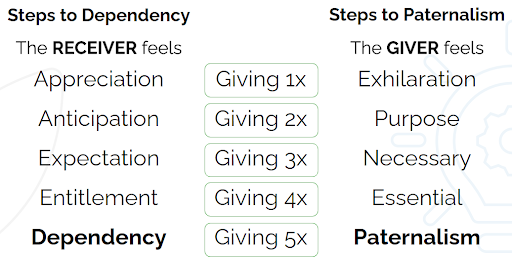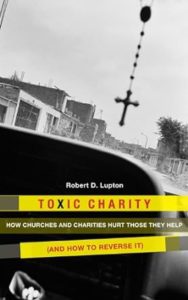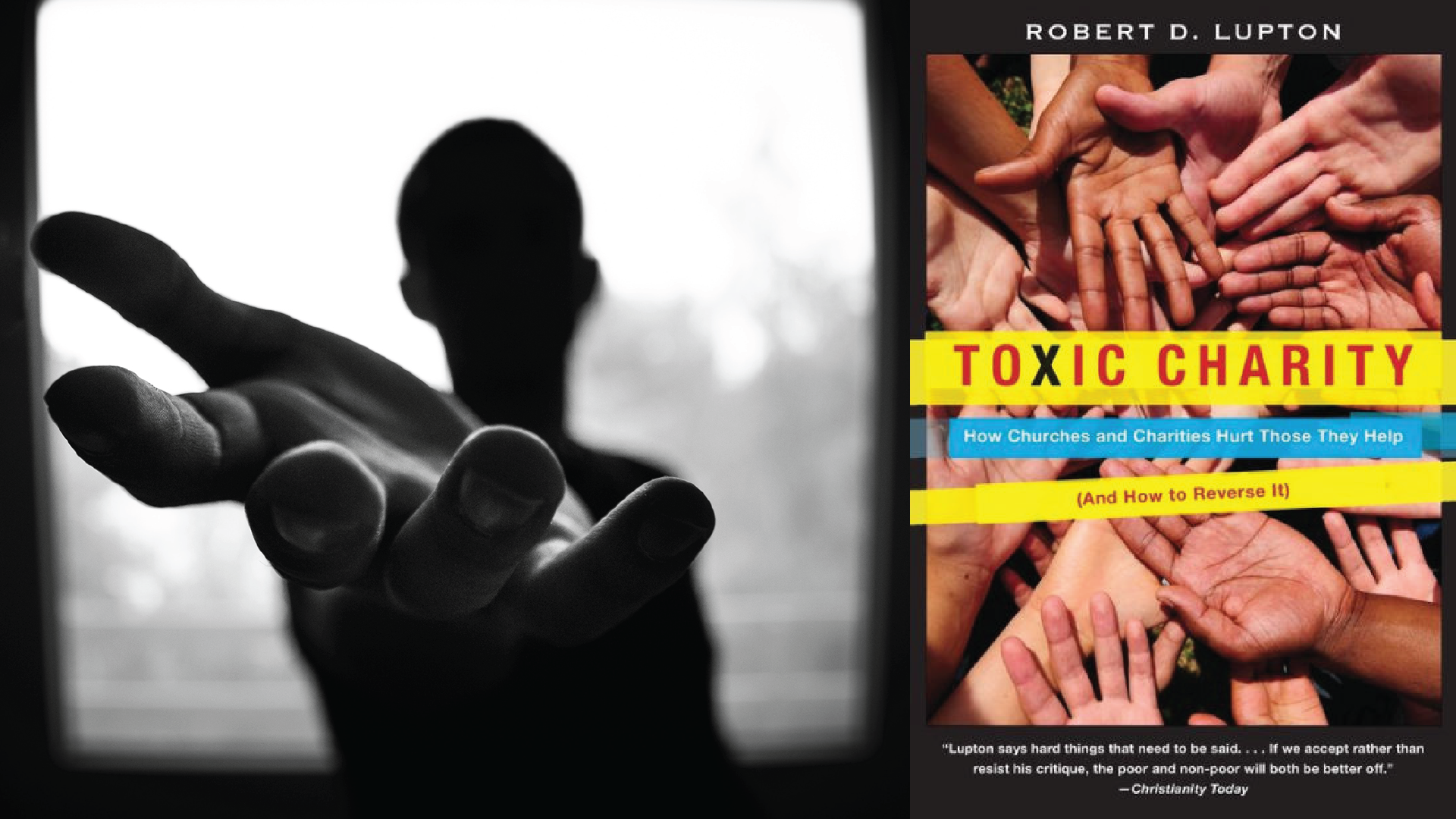An Overview of Toxic Charity: How Churches and Charities Hurt Those They Help (and How to Reverse It)
 Amanda Fisher
Amanda Fisher
Joplin Area True Charity Director & Foundations Workshop Coordinator
Read more from Amanda
Jump to:
The Perspective | The Purpose of the Book | The Key Points | Details We Love | Considerations | Who Should Read This?
The author of Toxic Charity, Robert Lupton, brings to this text over 40 years of experience working among the urban poor. Lupton moved to the inner city to become neighbors with the individuals there. This context gave him a fresh perspective of the importance of not “doing for” the poor but “doing with” the poor. He shares his wealth of experience by giving specific examples of both effective and ineffective charity that he has witnessed throughout his ministry. Although Lupton’s perspective is Christian, any individual in the poverty-fighting realm can benefit from the concepts presented.
The overall premise of Lupton’s work is that charity workers’ attempts at eliminating poverty—although almost always well-intended—are often not helpful. Many traditional efforts that people believe assist a person out of poverty are often doing just the opposite. Lupton motivates the reader to transition to evaluating charitable efforts based on outcomes achieved by the recipient rather than evaluating rewards that the giver receives through the provision of said charity. Lupton hopes his readers will embrace charitable principles that empower people to move beyond mere survival to a flourishing life.
In the first section of the book, Lupton asserts that most charitable organizations do not evaluate their charity based on the long-term benefits received by the recipient. More often, organizations focus on the benefits to the giver or the organization itself. The multiple examples of “charitable” efforts being destructive rather than helpful are compelling. However, Lupton gives the reader hope that changing the direction of charity in America is possible, giving specific examples of effective charity in the remainder of the book.
When it comes to fighting poverty, relationships are vital. Lupton emphasizes that there is “no simple or immediate way to discern the right response without a relationship.” Unfortunately, many who operate assistance programs meeting basic needs like food and clothing are doing so without any relationship, discernment, or comprehension of the underlying need. These types of well-intentioned programs foster continued dependency, deception, and disempowerment rather than healthy components of a relationship, including mutuality, reciprocity, and accountability.
In outlining the solutions to the problem of toxic charity, Lupton argues there are no “quick fixes” and that “hurry is the enemy of effectiveness.” He emphasizes that wise giving is essential and provides practical suggestions to consider before donating to an organization. He also offers an “Oath for Compassionate Service” for charity workers to consider. The oath includes six statements to serve as a guide prior to providing aid, including:
- Never do for the poor what they have the capacity to do for themselves.
- Limit one-way giving to emergency situations.
- Strive to empower the poor through employment, lending, and investing, using grants sparingly to reinforce achievements.
- Subordinate self-interest to the needs of those being served.
- Listen closely to those you seek to help, especially to what is not being said—unspoken feelings may contain essential clues to effective service.
- Do no harm.
Without these practical safeguards, Lupton warns of 5 downward steps to dependency: Appreciation, Anticipation, Expectation, Entitlement, and Dependency. Knowing the danger of repetitive, one-way giving assists charity workers to understand that they are often part of keeping individuals trapped in poverty and dependent on systems.
The True Charity team often recommends Toxic Charity to individuals and organizations interested in ensuring the charity they are practicing is effective. Because it is a quick and easy read, individuals can benefit from the principles Lupton outlines without feeling overburdened. Additionally, examples from Lupton’s work are sprinkled throughout True Charity Initiative’s Foundations Workshops and the online True Charity University training. Our Executive Director, James Whitford, often quotes Lupton’s “Five Steps to Dependency,” and has added his own “Five Steps to Paternalism,” which apply to the giver.

The author generalizes that short-term mission trips neither effect lasting change nor change the lives of the participants, seemingly painting short-term missions in a negative light. While his critiques are doubtless valid in many places, this generalization could damage organizations that do practice effective charity and rely on short-term missions teams for both financial aid and project assistance. Additionally, although Lupton strongly supports measuring outcomes to prove empowerment is more effective than handouts, his broader case is built largely on personal experience and anecdote. To be fair, there are no scientific sources that comprehensively compare handout charity to empowerment to which he could appeal. There is supporting evidence from social science, but that is not featured in this book due to its intended audience.
This book should be read by the 90% of Americans who are either personally or financially involved in some sort of “charity,” be it local service projects, short or long-term mission trips, or volunteering at a soup kitchen. At the very least, leaders for ministries, missions, or non-profits engaged in poverty alleviation should immediately put this book at the top of their list as they develop strategies to move their organizations toward practicing charity that fosters freedom, not dependence.
 “Toxic Charity” can be purchased on Amazon. If you purchase the book through this link, True Charity will earn a small amount as an Amazon Associate.
“Toxic Charity” can be purchased on Amazon. If you purchase the book through this link, True Charity will earn a small amount as an Amazon Associate.

This article is just the tip of the iceberg for the practical resources available through the True Charity Network. Check out all of the ways the network can help you learn, connect, and influence here.
Already a member? Access your resources in the member portal.



